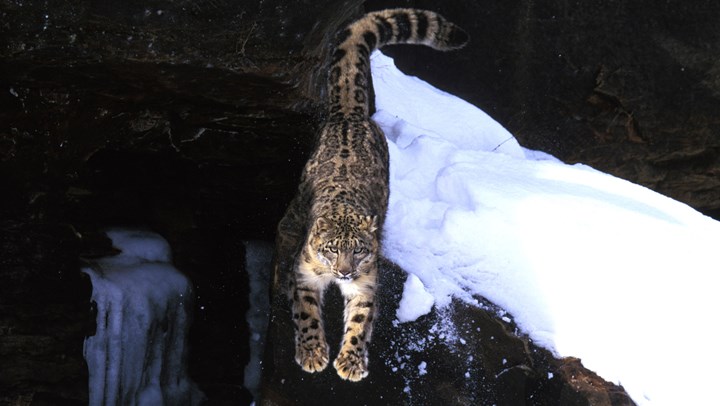
by Karen Mehall Phillips - Tuesday, October 17, 2017

How great is modern-day technology? According to a recent Dallas Safari Club article, the Snow Leopard Conservancy says biologists at Duquesne University have determined there are not one but three unique sub-species of Asia’s snow leopard, all with distinct DNA patterns. Why are researchers only now figuring this out? Because the cat’s range spans 12 Asian countries and includes harsh mountain landscapes that until now have made long-term, in-depth studies quite tough.
With the overall snow leopard population estimated between 4,500 to 7,500 animals, the sub-species are: the Northern (Altai Mountain region where China, Kazakhstan, Mongolia and Russia meet), the Central (Himilaya Mountains and Tibetan Plateau) and the Western (Tian Shan, Pamir and trans-Himalayan mountain ranges). The 12 Asian countries inhabited by these cats are currently working together to monitor at least 100 breeding snow leopards in designated protected areas. Team work is important, partly as research conducted in southern Mongolia last year revealed that the home range of these cats is larger than expected. While it was previously thought that a male required 220 square kilometers of habitat, the new studies showed that one collared cat roamed more than 1,000 square kilometers—the size of New York City.
As little as 10 years ago, the only way to track snow leopards was on foot, which meant navigating steep slopes in cold, harsh conditions, putting human researchers at a disadvantage. Now 21st-century advancements—satellites and smaller, lighter-weight digital cameras and batteries—more easily and efficiently monitor cat behavior, movement and habitat needs. As researchers have explained in recent media interviews, the fact that previous tracking collars relied on radio waves meant they only gathered data if a cat remained visible. Once it cleared the mountaintop or moved just out of sight, data collection ended. Researchers also recognized they were not benefitting from their data if cats were restricting their movement due to the weight of the collars. For a bonus on an altogether different issue, the collars will be effective in warning researchers and other people when snow leopards are in an area with livestock, which will help to reduce livestock attacks and cat deaths.
Animal Welfare: The Hunter's Drive to Conserve
While few of us American hunters will ever even see these beautiful cats that dwell in Asia thousands of miles away, we are still driven to want to conserve them—and every other wildlife species—for future generations. On the homefront of our own continent, that is the beauty of our own North American Model of Wildlife Conservation on which we were raised. Established by hunters more than a century ago, the model’s guiding principles are two-fold: The fish and wildlife on our public lands belong to all Americans and must be managed in a way that forever sustains their populations so there will always be wildlife and wild places to enjoy; and sound science is essential to managing and sustaining North America’s wildlife and habitats. For just one example on the science front here at home, look at the use of tracking collars in America. Did you know that researchers—funded by hunters’ dollars—put radio collars on elk to track their movements and determine where they give birth and how they react to motor vehicles on forest roads? Be sure to tell the non-hunters in your life about how we hunters attempt to apply the model’s principles to all wildlife.
E-mail your comments/questions about this site to:
[email protected]
Proudly supported by The NRA Foundation and Friends of NRA fundraising.
